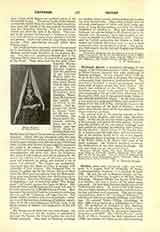

Dryburgh Abbey, a monastery belonging to the canons of the Premonstratensian Order (Norbertine or White Canons), situated four miles southeast of Melrose, Scotland. It was founded about 1150 by Hugo de Morville, Constable of Scotland, who brought a community from Alnwick in Northumberland. The situation is beautiful, a wooded promontory, around three sides of which sweeps the River Tweed. The church was dedicated to the Blessed Virgin. The monastery was burnt to the ground by Edward II, who encamped in the grounds when retreating from Scotland in 1322; but it was restored under Robert I, who himself contributed largely. At the Dissolution it was created a temporal lordship, and conferred by James VI on the Earl of Mar, who made it over to his third son, ancestor of the Earl of Buchan. It has again come into the hands of the last-named family in recent times by purchase.
The general style of the existing remains of Dryburgh is Early English, with some older (Norman) work. Of the church only the western gable, the ends of the transept, and part of the choir remain; but considerable portions of the conventual buildings have been preserved, including the refectory, with a beautiful rose window. James Stuart, of the Darnley family, is buried under the high altar; and various members of the Buchan family lie in one of the chapels. The principal object of interest to visitors is the tomb of Sir Walter Scott, in St. Mary’s Aisle (part of the north transept). Sir Walter’s maternal ancestors, the Haliburtons, at one time owned Dryburgh. His wife and eldest son are also interred here.
D. O. HUNTER-BLAIR

